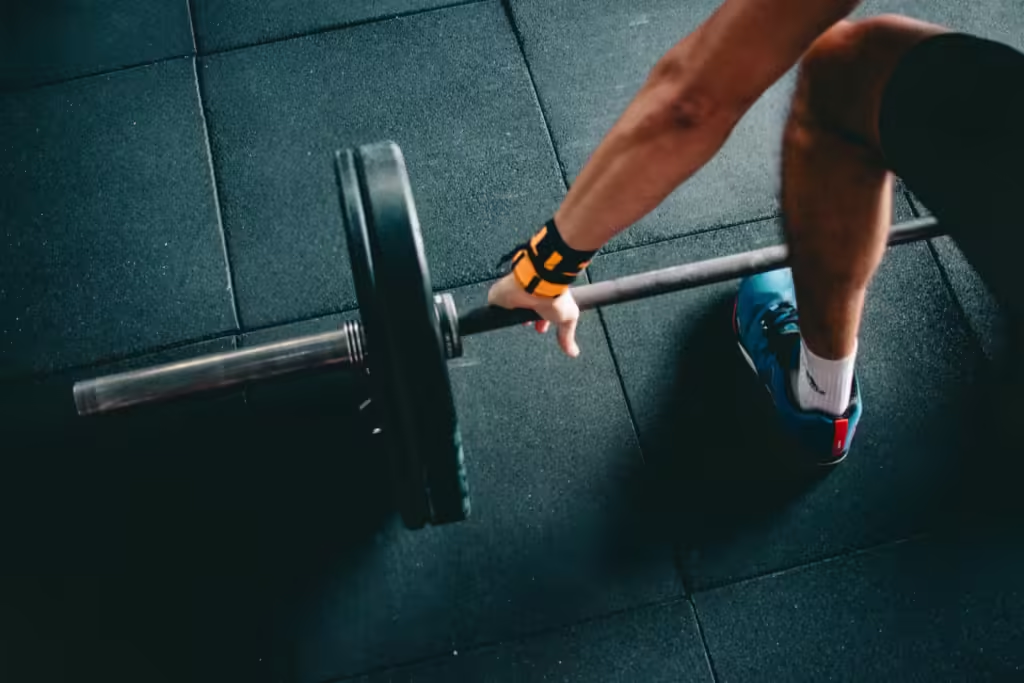How to Maintain Proper Posture While Lifting
Most people lift daily, whether picking up a box, carrying groceries or moving furniture. However, lifting the wrong way can lead to serious problems. Improper techniques can cause back pain, muscle strain and even severe injuries. This blog highlights the procedures for maintaining correct lifting posture, helping you stay safe and healthy.
What is a Good Posture?
A good posture is when the alignment of the body is positioned correctly. It preserves the natural curves of the spine, which include:
- Cervical curve (neck)
- Thoracic curve (mid-back)
- Lumbar curve (lower back)
When these curves are in alignment, your body feels balanced and supported. Good posture is essential not only when sitting or standing but also when lifting objects. It ensures that your muscles and ligaments work efficiently, reducing strain and injury risk.
Importance of Correct Posture While Lifting
Maintaining correct posture while lifting is crucial for health and safety, but incorrect lifting techniques can lead to various problems, including back injuries and muscle strain. Bad posture puts excessive strain on the spine, which can result in severe and long-term injuries such as herniated discs. Additionally, lifting incorrectly can cause muscle fatigue and strain, particularly in the lower back and legs.
Beyond the physical toll, poor lifting posture makes the task more complex and less efficient.
Common Lifting Mistakes
Many people make mistakes when lifting and often need to realise it. Here are some of the most common errors:
- Using your back instead of your legs: Relying on the back muscles instead of the stronger leg muscles increases the risk of back injury.
- Bending over at the waist: Bending at the waist instead of the knees leads to back strain.
- Twisting your body: Twisting while lifting can lead to serious back injuries.
- Holding the load too far away: Keeping the load too far from the body increases strain on the back.
- Lifting too quickly: Rapid movements can cause muscle strain and reduce control over the load.
What Causes Poor Posture?
Several factors can contribute to poor posture, especially when lifting. Some of the leading causes include:
- Weak muscles: If your core muscle is weak, it’s hard to maintain good posture. Strong core muscles support your spine and help keep it aligned, making it easier to lift correctly.
- Bad habits: Slouching, sitting for long periods and not paying attention to how you lift can lead to poor posture. Over time, these habits can become ingrained, making it difficult to correct your posture.
- Lack of knowledge: Many people don’t know how to lift and carry objects correctly. Without proper knowledge, it’s easy to develop lousy lifting techniques that can harm your body.
- Injury: Past injuries can affect your posture, making lifting difficult. Injuries can cause pain and limitations in movement, leading to compensatory behaviours that compromise posture.
- Fatigue: Being tired makes it harder to maintain good posture, increasing the risk of injury. Fatigue reduces your body’s ability to support itself properly, making it more likely you’ll use incorrect lifting techniques.
Proper Lifting Technique: Step-by-Step
Here is a step-by-step guide to lifting properly:
- Plan the lift: Consider where you must go and clear the path before lifting. Ensuring a clear, obstacle-free route will help prevent trips and falls.
- Get close to the load: Stand close to the object you’ll lift. Being close minimises the strain on your back and helps you maintain control over the object.
- Feet position: Keep your feet shoulder-width apart. This gives you a stable base, helping you balance and distribute weight evenly.
- Bend your knees: Squat down by bending at the knees and hips, not your waist. This technique shifts the workload to your stronger leg muscles instead of your back.
- Keep your back straight: Maintain your spine’s natural curve. Don’t arch or round your back, leading to injuries and excessive strain.
- Firm grip: Use both hands to grip the object well. A secure grip ensures you can handle the load without slipping or causing an imbalance.
- Lift with your legs: Straighten your knees and hips to lift the object. Keep your back upright throughout the lift to avoid putting unnecessary strain on your spine.
- Keep the load close: Hold the object close to your body as you stand up. This reduces the leverage on your spine and helps maintain your balance.
- Avoid twisting: Turn your whole body if you need to change direction. Don’t twist your back while lifting, as it can lead to severe injuries.
- Put down carefully: When putting the object down, squat with your knees and hips, keeping your back straight. Lower the load gently to avoid sudden movements that could strain your muscles.
Tips for Preventing Back Injuries While Lifting
Before and during manual handling, workers should be aware of specific steps that can help prevent back injuries. Here are some tips:
- Warm-up: Before lifting, do light exercises to warm up your muscles. This trains your body for physical activity and reduces the risk of muscle strain.
- Use lifting equipment: If an object is too heavy, use a dolly or hand truck or get help from someone else. To avoid injury, don’t try to lift something beyond your capability.
- Know your limits: Understand how much you can safely lift and stick to that limit. Don’t push yourself to lift something that feels too heavy.
- Take breaks: If you have to lift multiple items, take regular breaks to avoid fatigue. Resting helps maintain your strength and focus, reducing the risk of improper lifting.
- Strengthen your core: Regular exercise to strengthen your core muscles will help maintain good posture. A stronger core muscle supports your spine and improves your lifting technique.
- Wear proper footwear: Shoes with good support and non-slip soles can prevent slips and falls. Adequate footwear provides a stable base for lifting, reducing the risk of accidents.
- Manual handling training: Take manual handling training to learn the correct lifting techniques. This training educates you on how to handle loads safely and efficiently, minimising the risk of injury.
The Importance of Training
Proper training equips individuals with the knowledge and skills needed to lift correctly, reducing the risk of injury. Through comprehensive health and safety training, workers learn about ergonomics, safe lifting techniques and the importance of maintaining good posture.
By prioritising health and safety training, organisations can foster a culture of safety, minimise workplace accidents and promote overall well-being.
Conclusion
Proper lifting posture is essential for preventing injuries and making the task easier. By following the correct lifting techniques, you can protect your back and other muscles from strain. Always lift with your legs, not your back and keep the load close to your body. Avoid twisting your body, and take your time. With these tips, you can lift safely and efficiently. Good posture is critical to staying healthy and injury-free, so always be mindful of how you lift.


